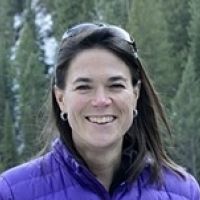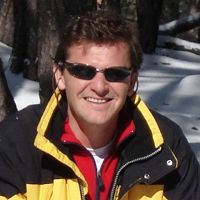Harman et al., 2012
Connections between transport in events and transport at landscape-structuring timescales (Invited)
Harman C.J., Lohse K.A., Troch P.A., Sivapalan M. (2012)
Abstract H52E-04 presented at 2012 Fall Meeting, AGU, San Francisco, Calif., 3-7 Dec (Talk).
-
Christina, INVESTIGATOR
-
Reynolds, INVESTIGATOR
-
Catalina-Jemez, INVESTIGATOR
Abstract
Complex spatial and temporal variability can arise in the critical zone when feedbacks occur at multiple time scales between transported materials and the landscape and soils through which it is transported. This is clearly illustrated where geomorphic transport processes, soil development, and vegetation interact in semi-arid shrublands. Here we use soil and terrain data and a numerical model of overland flow on semi-arid hillslopes to show that microtopography can generate spatial variations in the dominance of transport processes operating at different timescales, with consequences for the direction of resource redistribution between functional units within these ecosystems.
Conceptual and numerical models of the redistribution of mineral, organic and water have mostly been developed on low-gradient alluvial fans and pediments. These have focused on the fluvial transport of resources from the inter-spaces between shrub canopies to the areas below the canopy in those few storm events that generate significant run-off. These processes are believed to produce a mosaic of resource islands in which biota are concentrated.
We investigated the spatial distribution of soil properties (including organic matter and soil hydraulic properties), vegetation, and microtopography on two steeper hillslopes of contrasting lithology (one granite, one schist) in the Sonoran desert foothills of the Catalina Mountains. Three hypotheses were developed through iteration between fieldwork and data analysis. These tested whether there were significant differences in soil composition and hydraulic properties below- and between-canopy, whether the surface soil organic matter was directly associated with above-ground biomass, and whether soil organic matter distributions measured along transects below shrubs showed downslope asymmetries indicative of the processes that create them. Data from these sites were used in a numerical model to investigate how these structures could be related to the population of runoff events and processes that generate them.
The results suggest that over the long term, slope-dependent transport processes (such as rainsplash, bioturbation and trampling) seem to play an important role in these steeper hillslopes in inverting the flow of resources. Over many storm and inter-storm periods, soil organic matter is transported downslope in plumes extending at least two canopy radii downslope from below woody-shrub canopies into the inter-space. This pattern was particularly evident where microtopography and soil properties create micro-sites protected from fluvial transport.
While many of the patterns observed are similar to those from more stable geomorphic surfaces, the results suggest that long-term downslope transport processes in sloping terrain can disrupt the autogenic processes that reinforce the redistribution of resources under shrubs. This result has important implications for our understanding of the relationship between ecosystem function and landscape-scale transport in these environments.
Citation
Harman C.J., Lohse K.A., Troch P.A., Sivapalan M. (2012): Connections between transport in events and transport at landscape-structuring timescales (Invited). Abstract H52E-04 presented at 2012 Fall Meeting, AGU, San Francisco, Calif., 3-7 Dec (Talk)..
Explore Further



